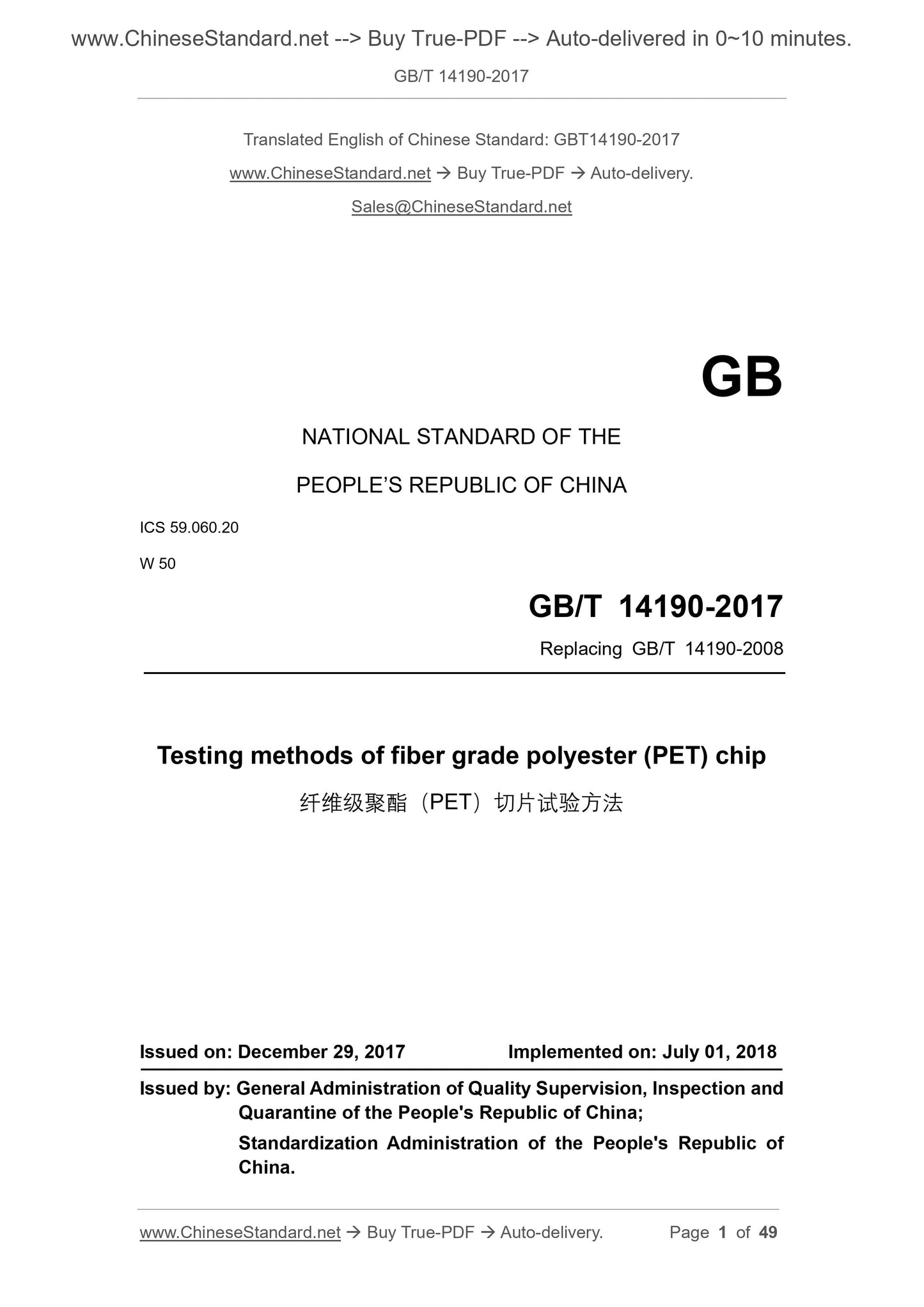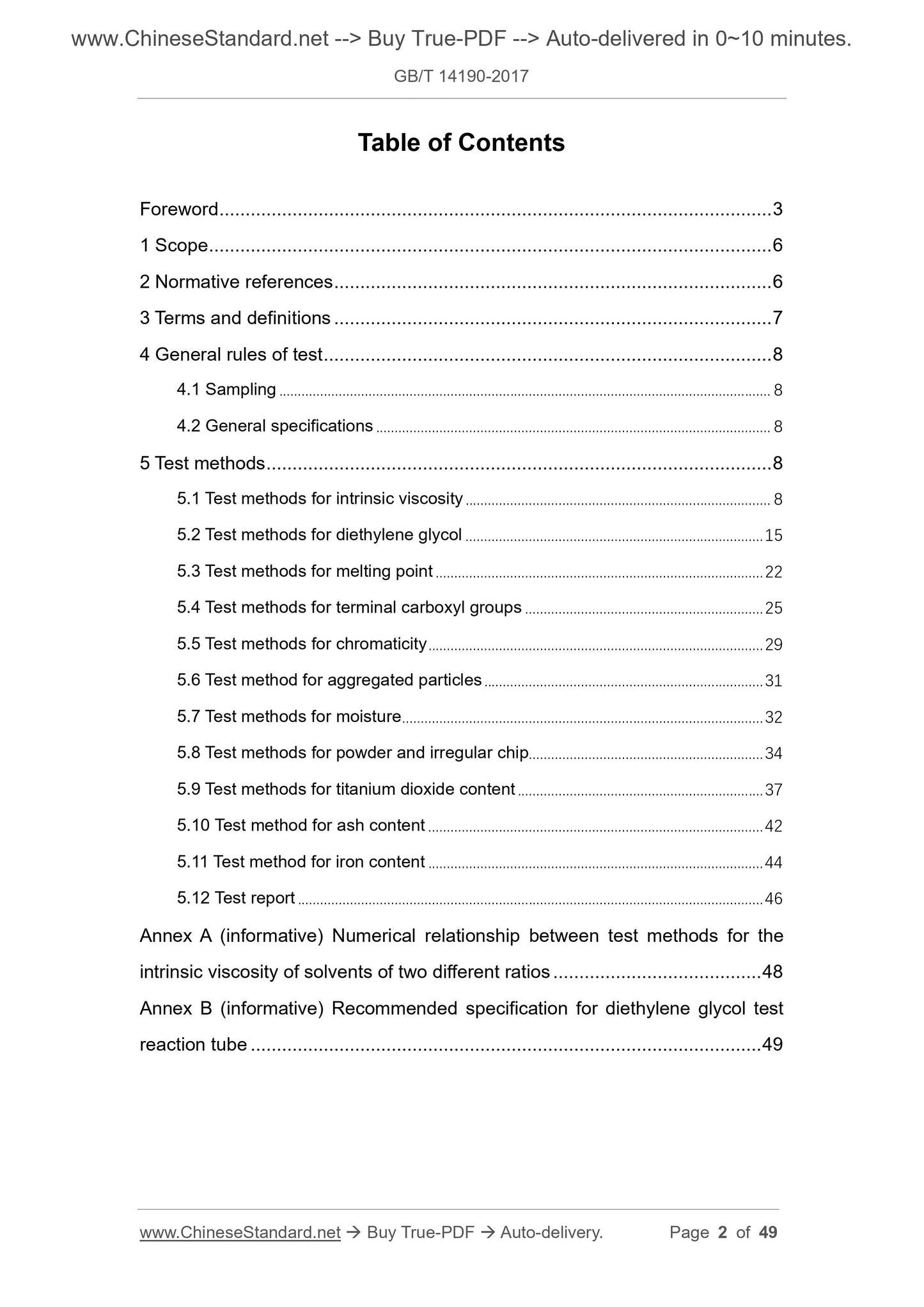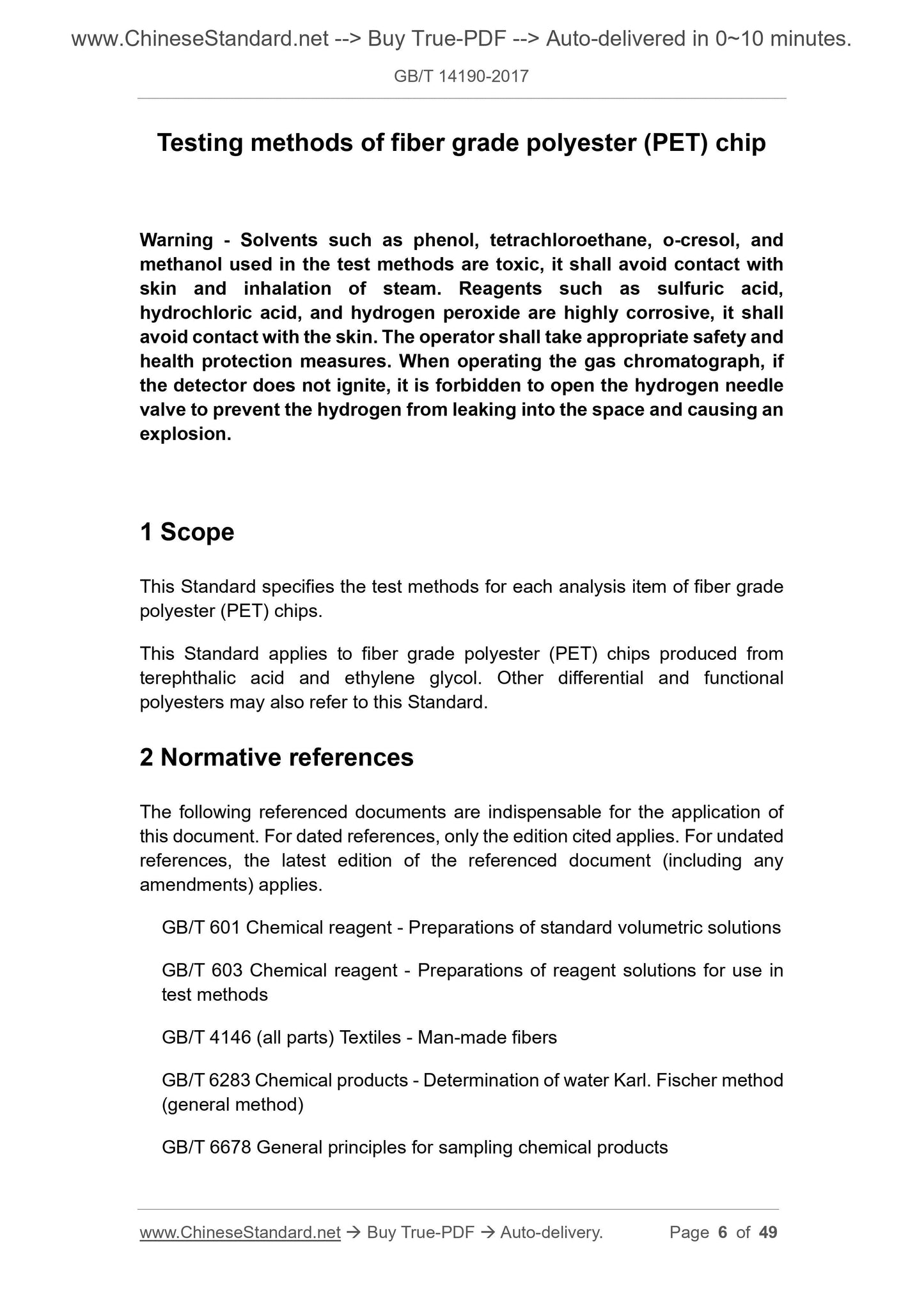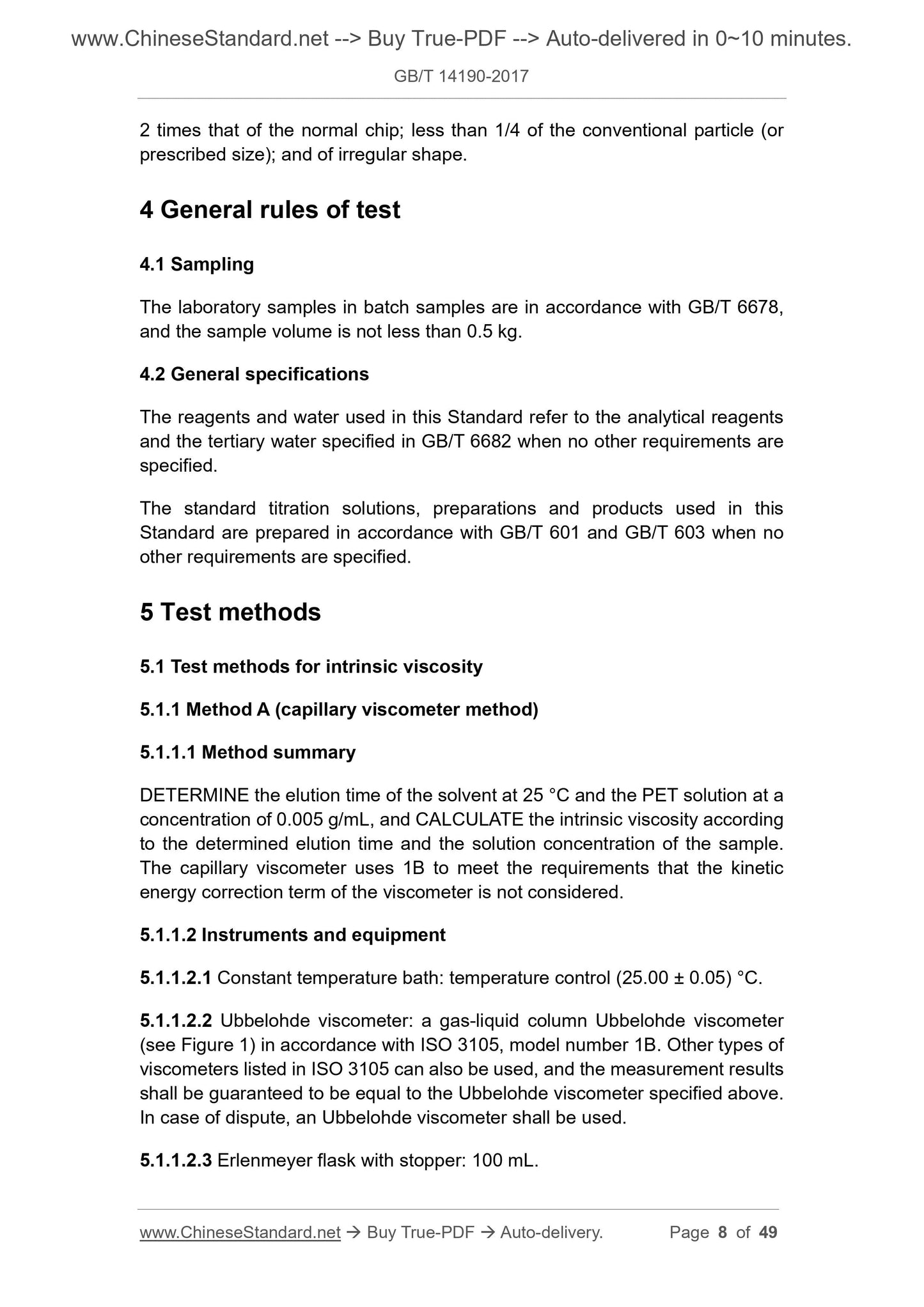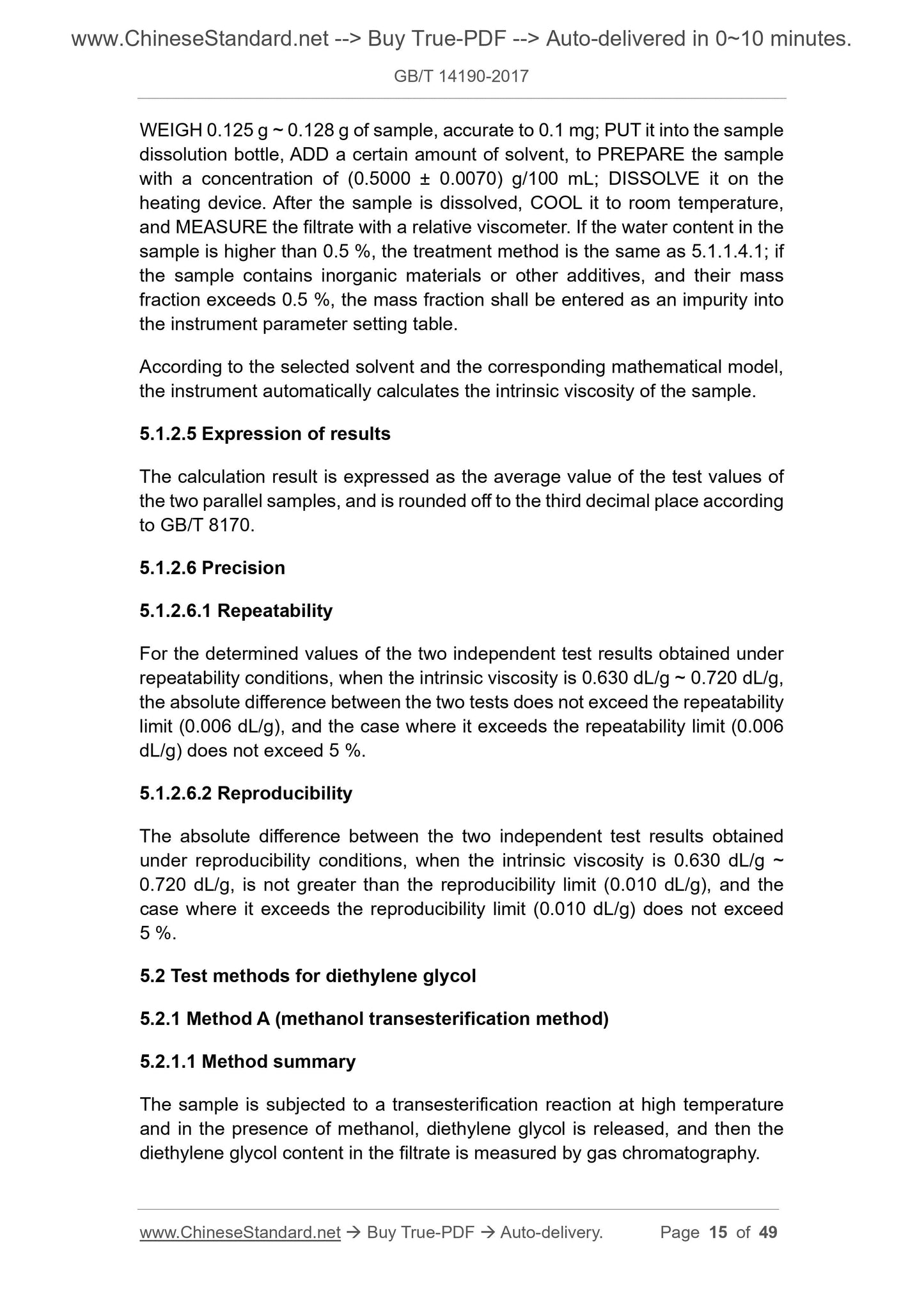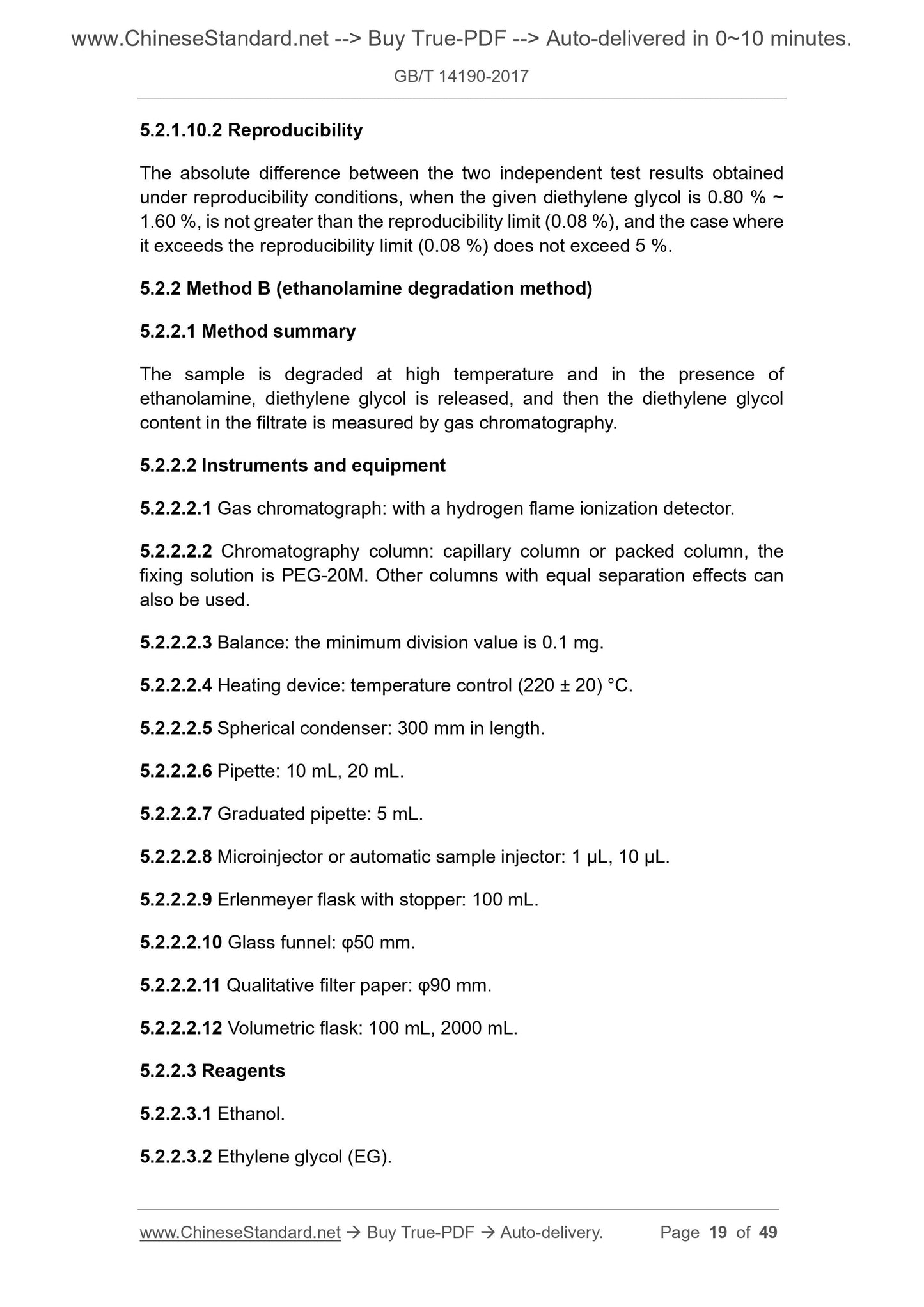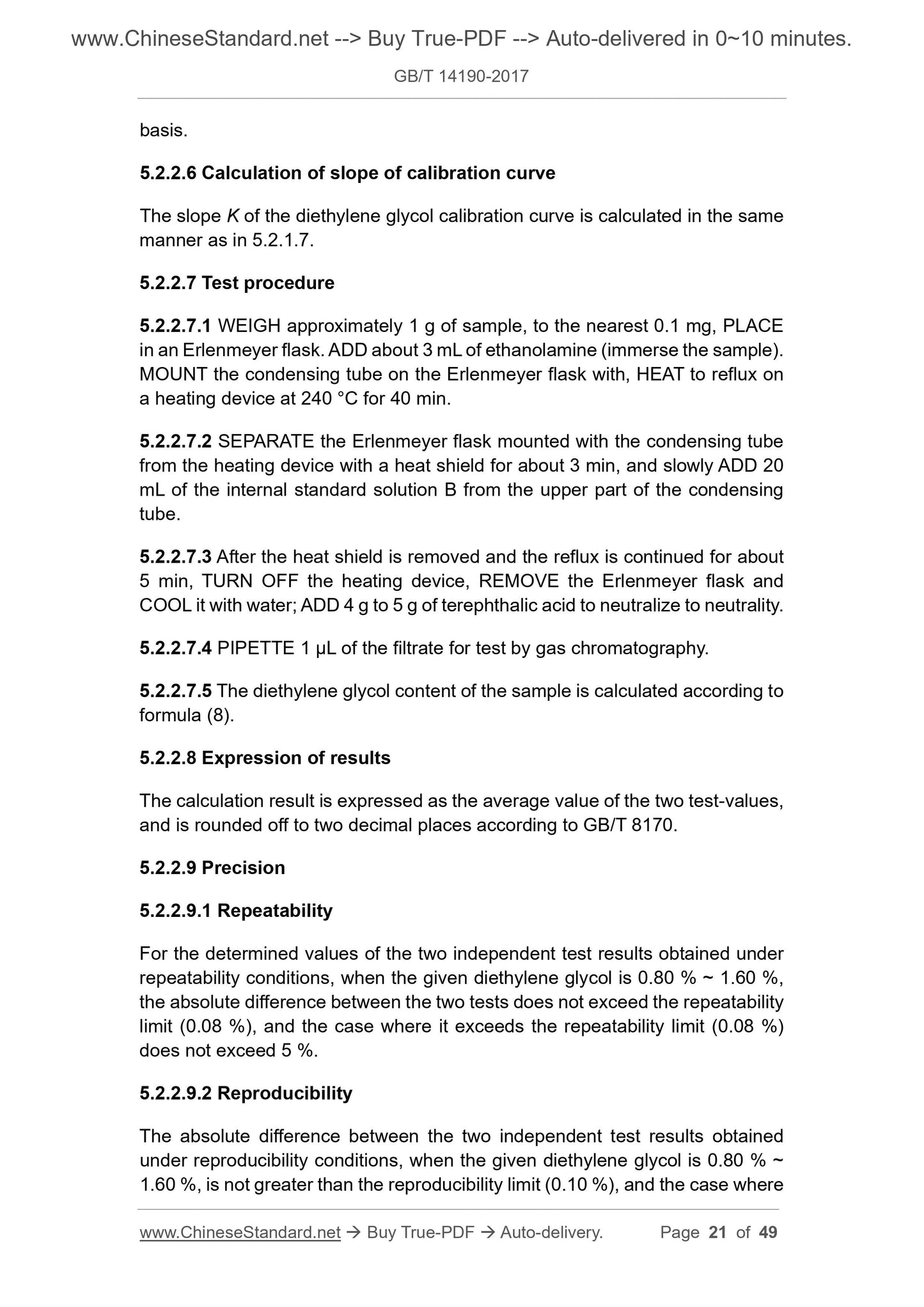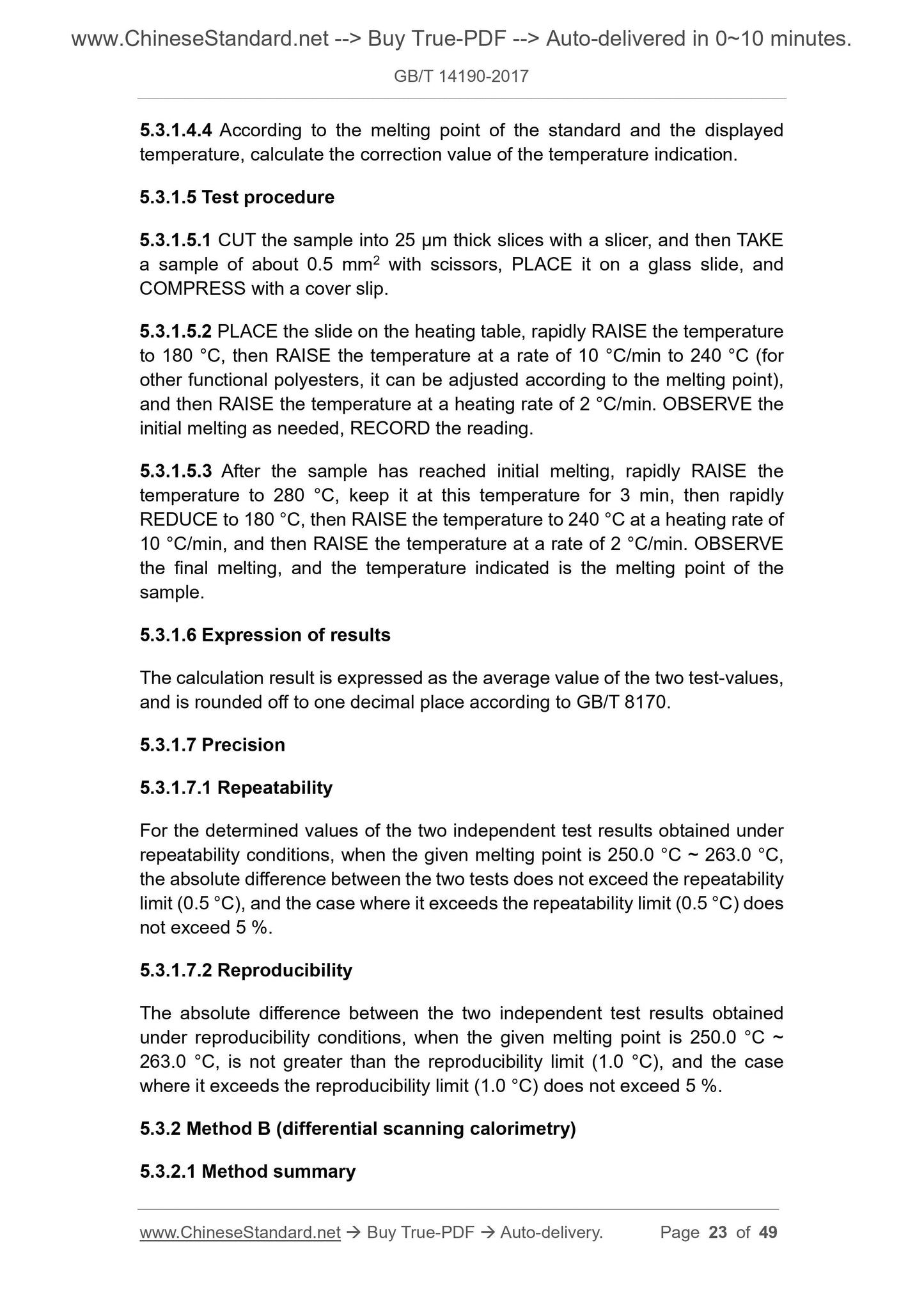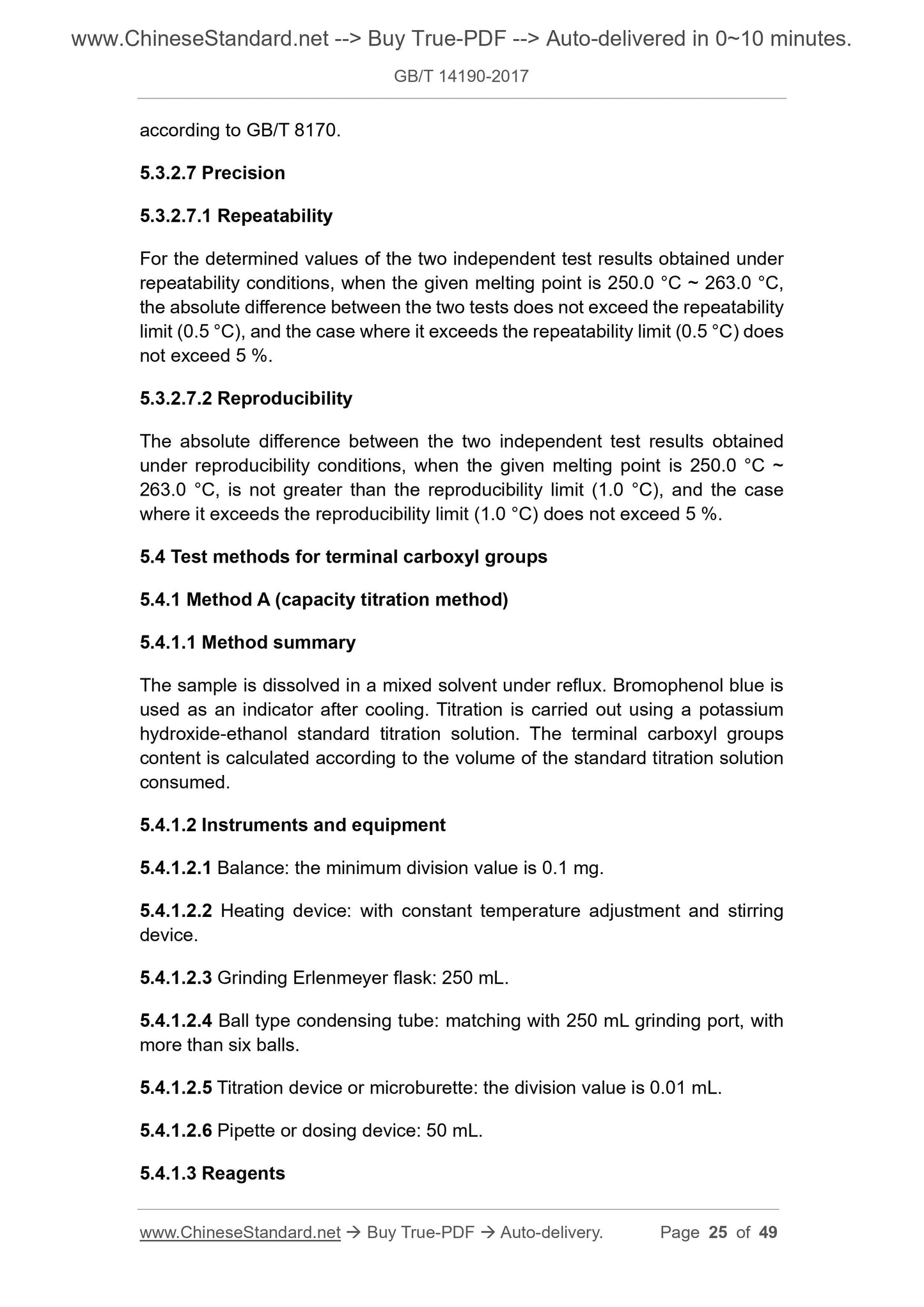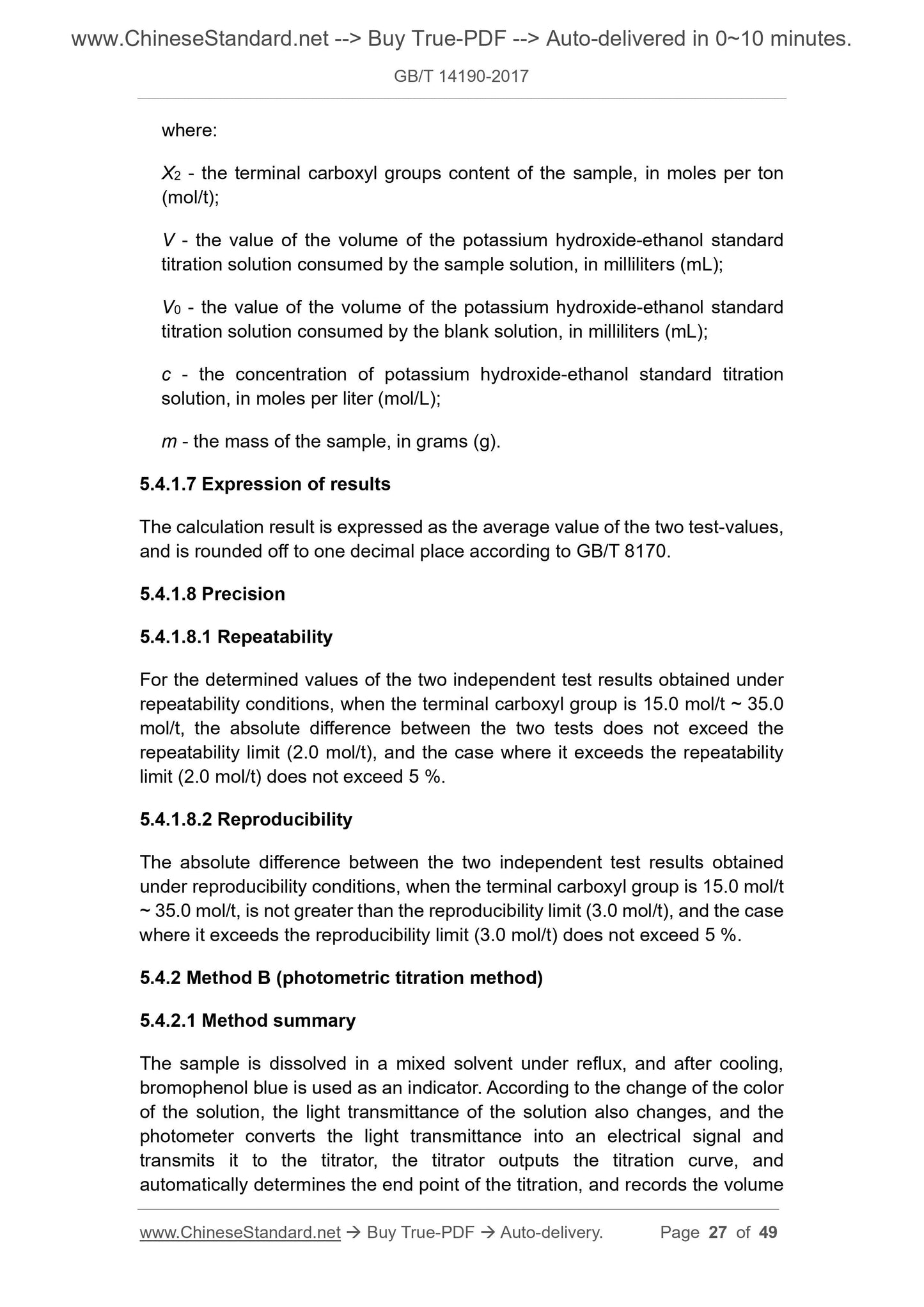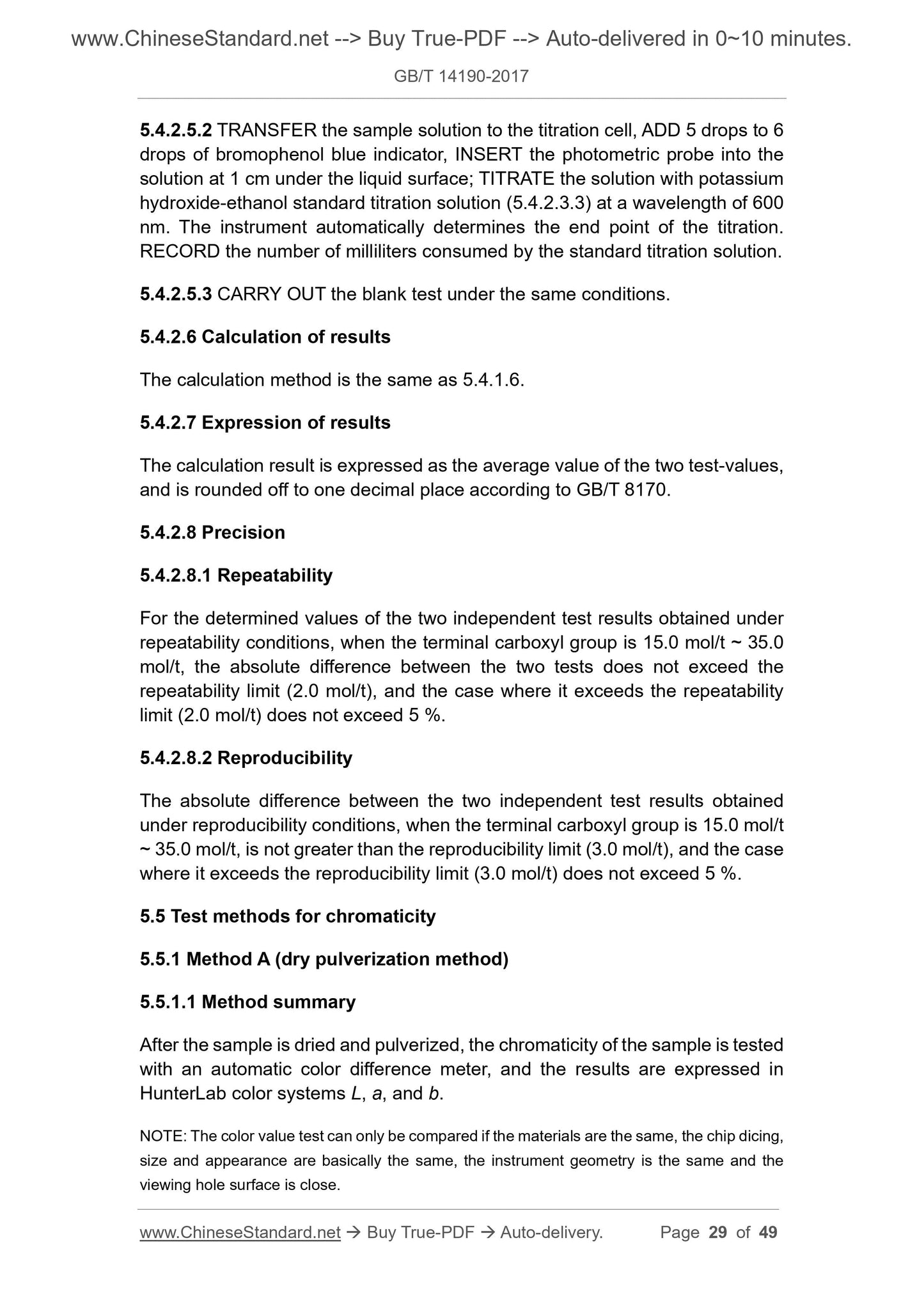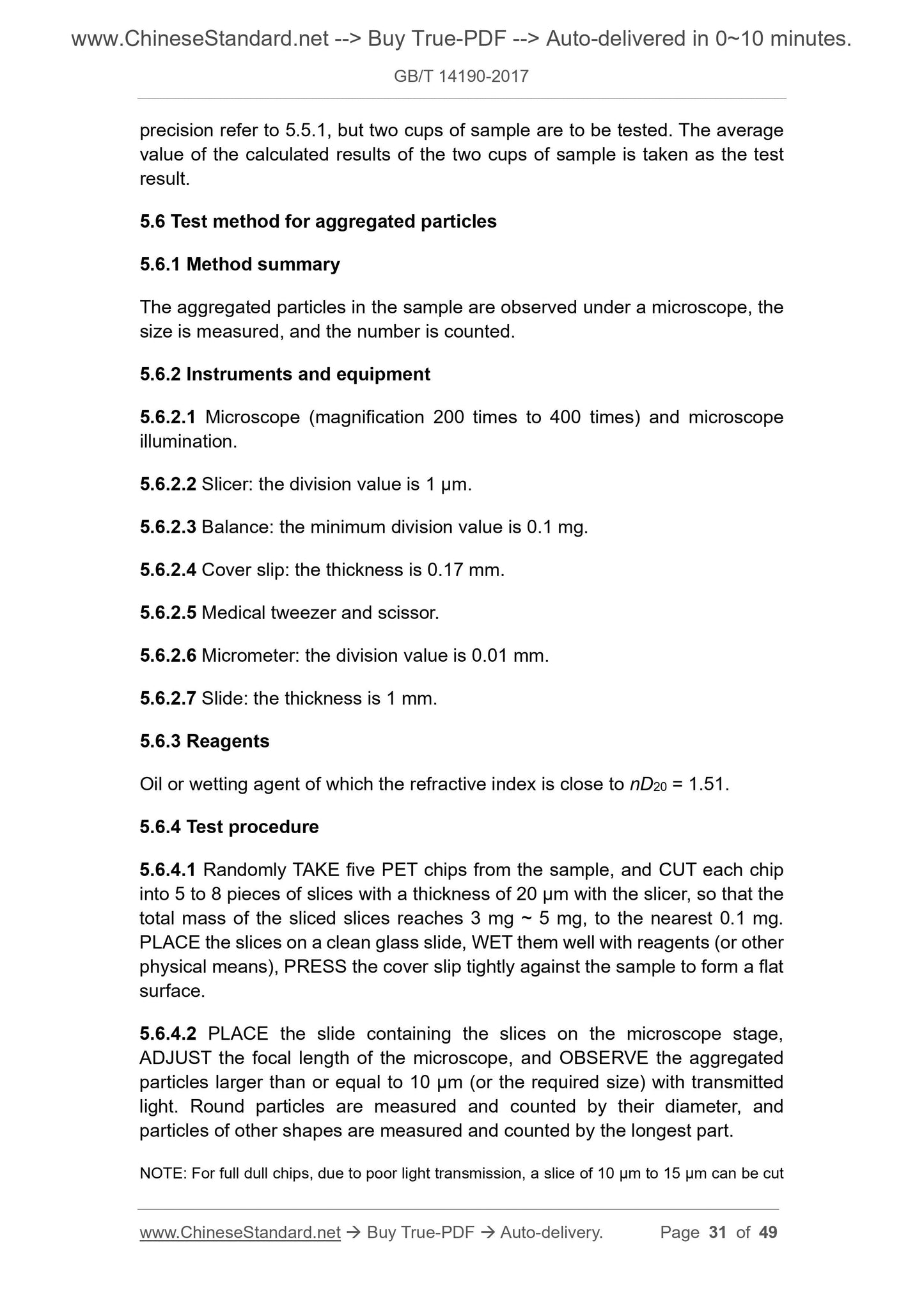1
/
of
12
www.ChineseStandard.us -- Field Test Asia Pte. Ltd.
GB/T 14190-2017 English PDF (GB/T14190-2017)
GB/T 14190-2017 English PDF (GB/T14190-2017)
Regular price
$455.00
Regular price
Sale price
$455.00
Unit price
/
per
Shipping calculated at checkout.
Couldn't load pickup availability
GB/T 14190-2017: Testing methods of fiber grade polyester (PET) chip
Delivery: 9 seconds. Download (and Email) true-PDF + Invoice.Get Quotation: Click GB/T 14190-2017 (Self-service in 1-minute)
Newer / historical versions: GB/T 14190-2017
Preview True-PDF
Scope
This Standard specifies the test methods for each analysis item of fiber gradepolyester (PET) chips.
This Standard applies to fiber grade polyester (PET) chips produced from
terephthalic acid and ethylene glycol. Other differential and functional
polyesters may also refer to this Standard.
Basic Data
| Standard ID | GB/T 14190-2017 (GB/T14190-2017) |
| Description (Translated English) | Testing methods of fiber grade polyester (PET) chip |
| Sector / Industry | National Standard (Recommended) |
| Classification of Chinese Standard | W50 |
| Classification of International Standard | 59.060.20 |
| Word Count Estimation | 34,395 |
| Date of Issue | 2017-12-29 |
| Date of Implementation | 2018-07-01 |
| Older Standard (superseded by this standard) | GB/T 14190-2008 |
| Regulation (derived from) | National Standards Bulletin 2017 No. 32 |
| Issuing agency(ies) | General Administration of Quality Supervision, Inspection and Quarantine of the People's Republic of China, Standardization Administration of the People's Republic of China |
Share
